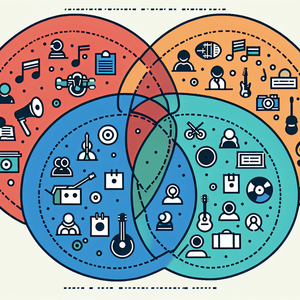Understanding Salary Inflation in a Gig Economy

The gig economy refers to a labor market characterized by short-term contracts and freelance work as opposed to permanent jobs. According to a report by McKinsey, as of 2020, nearly 36% of U.S. workers participated in the gig economy in some capacity. This growth is fueled by technological advancements, which have made it easier for employers to find and hire freelancers for specific tasks, and for workers to connect with potential clients. The COVID-19 pandemic accelerated this trend, as many individuals sought alternative income streams when traditional job opportunities dwindled. Platforms such as TaskRabbit and Etsy illustrate the diversity within the gig economy, catering to a wide range of services from home repairs to handmade crafts. This evolution has not only provided workers with flexibility but has also reshaped consumer expectations regarding service delivery and pricing.
Salary Inflation in the Gig Economy
Salary inflation, defined as a general increase in salaries across the workforce, manifests differently in the gig economy compared to traditional employment. In a gig-centric environment, pay rates can fluctuate significantly based on demand, location, and the nature of the work. For instance, a freelance graphic designer may charge $50 per hour for a project in a metropolitan area, while the same designer might earn only $30 per hour in a rural region. This variability introduces a level of unpredictability in income, making financial planning more challenging for freelancers. Moreover, the competitive nature of the gig economy often leads to a race to the bottom, as freelancers undercut each other to secure jobs, which can suppress wages in the short term. However, as demand for gig work increases, particularly in high-skill sectors like technology and the creative industries, we may observe an upward trend in pay rates. This duality creates a volatile environment for workers, who must constantly navigate changing market conditions and adapt their pricing strategies accordingly.
Factors Contributing to Salary Inflation
1. Demand and Supply Dynamics: High demand for specific skills can drive salaries up, while oversupply can have the opposite effect. For example, during the pandemic, there was a surge in demand for web development and digital marketing skills, leading to increased rates for those services. 2. Skill Specialization: Workers who possess niche skills are often able to command higher pay. For instance, a data scientist with advanced machine learning skills might earn significantly more than a general data analyst due to the specialized knowledge required. 3. Geographic Variations: Location plays a critical role in determining pay rates. Urban areas with a high cost of living typically offer higher pay, whereas rural regions may see lower rates due to reduced demand.
Implications for Traditional Employment Structures
The rise of gig work has profound implications for traditional employment. As more individuals turn to freelance work for flexibility and autonomy, companies may struggle to retain talent. This competition for skilled workers can lead to salary inflation in traditional roles as organizations are forced to offer higher wages and better benefits to attract and retain employees. Moreover, the gig economy can create a disparity in pay structures. Workers in traditional roles may perceive the pay rates of gig workers as benchmarks, leading to discontent and demands for salary increases. Companies must balance the need to remain competitive with the potential for salary inflation to impact their financial bottom line. For instance, if a company discovers that its software engineers are leaving for freelance opportunities that pay more, it may need to reevaluate its compensation packages to prevent turnover, which can lead to increased salary inflation across the board.
Navigating Fluctuating Pay Rates: Insights for Workers
For workers navigating the gig economy, understanding the dynamics of salary inflation is crucial. Here are some strategies for managing fluctuating pay rates: 1. Diversify Skill Sets: By acquiring new skills, workers can increase their marketability and command higher rates in the gig economy. Online courses and certifications can provide valuable credentials. 2. Build a Strong Portfolio: A robust portfolio showcasing previous work can help freelancers justify their rates and attract higher-paying clients. Utilizing platforms like Behance or LinkedIn can enhance visibility. 3. Network Strategically: Building connections within industries can lead to repeat work and referrals, providing more stable income streams. Participating in industry conferences and online forums can facilitate networking opportunities. 4. Stay Informed: Keeping abreast of industry trends and pay rates can help workers negotiate better compensation and make informed decisions about their career paths. Utilizing resources like salary inflation calculators can provide insights into current market conditions.
The gig economy is reshaping the landscape of work and has significant implications for salary inflation. As more individuals participate in freelance opportunities, the relationship between gig work and traditional employment will continue to evolve. Workers must navigate this complex terrain with a clear understanding of the forces at play, while employers must adapt to attract and retain talent in an increasingly competitive market. By recognizing the nuances of salary inflation in the gig economy, both workers and employers can better prepare for the future of work, fostering a more balanced and equitable labor market.
Freelance Graphic Designer
Freelance platforms (Upwork, Fiverr), marketing agencies, startups
Core Responsibilities
Create visual content for various clients, including logos, marketing materials, and social media graphics.
Collaborate with clients to understand their vision and brand identity, ensuring designs align with their goals.
Manage multiple projects simultaneously while meeting deadlines and client expectations.
Required Skills
Proficiency in design software such as Adobe Creative Suite (Photoshop, Illustrator, InDesign).
Strong portfolio showcasing a variety of design styles and projects.
Excellent communication skills for client interactions and feedback sessions.
Data Scientist (Freelance/Contract)
Tech startups, consulting firms, research organizations
Core Responsibilities
Analyze large datasets to extract meaningful insights and trends that inform business strategies.
Develop predictive models using machine learning techniques to enhance decision-making processes.
Communicate findings effectively to stakeholders through reports and presentations.
Required Skills
Proficiency in programming languages such as Python or R, and familiarity with data visualization tools like Tableau or Power BI.
Experience with statistical analysis and machine learning algorithms.
Strong problem-solving skills and the ability to work independently on complex projects.
Social Media Manager (Contract)
Marketing agencies, small businesses, nonprofits
Core Responsibilities
Develop and implement social media strategies to enhance brand awareness and engagement.
Create and curate content for various social media platforms, aligning with marketing campaigns.
Analyze performance metrics and adjust strategies based on data-driven insights.
Required Skills
Experience with social media management tools (Hootsuite, Buffer) and analytics platforms.
Strong writing and communication skills, with a knack for storytelling.
Ability to stay updated on social media trends and best practices.
UX/UI Designer (Freelance)
Tech companies, app development firms, freelance marketplaces
Core Responsibilities
Design user-friendly interfaces for websites and mobile applications, focusing on enhancing user experience.
Conduct user research and usability testing to gather feedback and iterate on designs.
Collaborate with developers to ensure design feasibility and implementation.
Required Skills
Proficiency in design and prototyping tools like Sketch, Figma, or Adobe XD.
Understanding of user-centered design principles and accessibility standards.
Strong portfolio demonstrating previous UX/UI projects and design processes.
Content Writer (Freelance)
Content marketing agencies, online publications, corporate clients
Core Responsibilities
Research and write engaging content for blogs, articles, and marketing materials tailored to specific audiences.
Collaborate with clients to understand their messaging and content strategy goals.
Optimize content for SEO to improve visibility and engagement.
Required Skills
Excellent writing and editing skills, with a strong command of grammar and style.
Familiarity with SEO best practices and content management systems (WordPress, HubSpot).
Ability to adapt writing style for different formats and audiences.
![The Gig Economy Boom: Freelancing Trends in [Your State] The Gig Economy Boom: Freelancing Trends in [Your State]](https://media.jenniejohnson.com/articles/5a3e9d26-e5b0-4849-a8a6-46108dd9d089)

